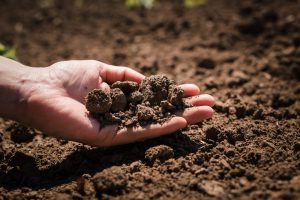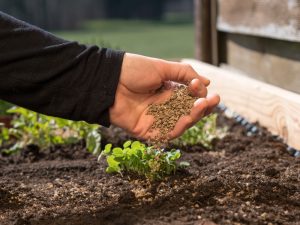
Are you ready to start your garden project? Not only is gardening fun and takes you outdoors, but you will also discover that there is nothing more satisfying than being able to grow your food. Nevertheless, gardening can also be equally frustrating and difficult when things don’t grow the way you expect. Why does this happen? It usually occurs when you make some gardening mistakes, and the key is to know what they are to steer clear of them. Ready to know more? Let’s check out some common gardening mistakes to avoid below:
Mistake 1: Not choosing the right location
The first common mistake when gardening is not knowing your own yard. No, gardening is not just about ordering some seeds and picking up the shovel to plant them. Your garden may be located next to your back patio, but this doesn’t make it the perfect place to plant. It would be best if you got to know your yard first in order to grow your food. Choose a location that gets at least eight hours of direct sunlight because that is what most fruits and vegetables require. Make sure there is a convenient water source, so you can water as needed. Lastly, your garden’s location should be such that it is visible and noticeable, or it can be tempting just to ignore it.

Mistake 2: Not adjusting the soil
Your garden soil is going to require some amendments before it is ready for planting unless you are lucky enough to have loamy soil that comprises of a balanced combination of silt, sand, clay, and organic matter. If the soil you have is heavy on clay, it will need some organic matter and sand to relieve compaction. To improve the retention of nutrients and moisture, you will require well-rotted manure, or compost, in the case of sandy soil and so on.
Mistake 3: Planting too close
The seeds you get are usually so small that it seems just right to plant them close together. However, this can be a big mistake because crowded plants suffer from poor air circulation, nutrient deficiencies and have to compete for sunlight and moisture. It is a good idea to check the seedling tags or seed packets to see the spacing recommendations and then plant accordingly. You also have the option of thinning the plants as they start growing.
Mistake 4: Adding excessive nitrogen
Nitrogen is a must for plants for ensuring chlorophyll production, but excess of anything is never good, and this applies to nitrogen as well. Too much of it can make plants leggy and leafy, and the roots become overburdened because of all that foliage. This means it will not spread or grow at its normal rate, making it susceptible to insect damage and disease, and it will produce little or no fruit at all. Moreover, too much nitrogen can also lead to excess mineral salts, and this makes them appear sunburned. Therefore, it is best to go easy on the nitrogen unless you are growing plants that specifically need lots of it.

Mistake 5: Watering too much
Everyone is aware that plants require water to grow. The problem is that most people are so excited about gardening that they end up overwatering. As mentioned earlier, the excess is never good, and overwatering will not make your plants grow faster or healthier. Instead, the fungus will begin to grow on the leaves, and the soil will attract mold that will eventually kill the roots. In addition, watering daily will also encourage the plant to have shallow roots because the water is available on the surface, and they don’t have to develop a strong, big system to search for it. This is not good for all plants and can affect their growth.
Mistake 6: Not watering enough
Neglecting to water your plants can be an issue where the climate is dry and hot. Under-watering can often create problems for new transplants or sprouting seeds. The finger test is one of the best ways for you to determine if your garden needs watering or not. If you have loamy soil, just stick your finger into it about 2 inches deep. If it is dry, it needs water, and if it is moist, it doesn’t. Stick your finger 4 inches into sandy soil, whereas clay soil will need water if you cannot get 2 inches into the soil easily.
Mistake 7: Choosing the wrong plants
It is a fact that not all plants will grow well in an area. Growing a plant that survives in limited zones will not do well and leave you disappointed. For instance, a drought-prone area is not a good location to grow plants that need a lot of moisture for growth. Likewise, a rainy climate is not appropriate for plants that don’t like to be wet. If the gardening season is short, it will not suit plants that tend to have a long maturation period. You have to consider these factors when choosing what to plant so that you can get the desired results.

Mistake 8: Not feeding the plants
Plants don’t just need water to grow and thrive; there are different nutrients that they need from the soil to bloom. It would help if you fed the plants regularly, and this is where fertilizers come in. Compost is the easiest you can find, which is essentially decomposed cow manure. It is eco-friendly, organic and you can add a handful every 15 days to a pot to ensure your plants will stay healthy. When it comes to adding fertilization, don’t forget that moderation is key because applying more of it can kill the plant.
These are some of the mistakes that you need to avoid if you don’t want to see your gardening efforts go down the drain. Even if you commit some blunders, you shouldn’t be too hard on yourself because it takes more than a couple of months for people to learn the art of gardening, and even the best-laid plans can go astray!






